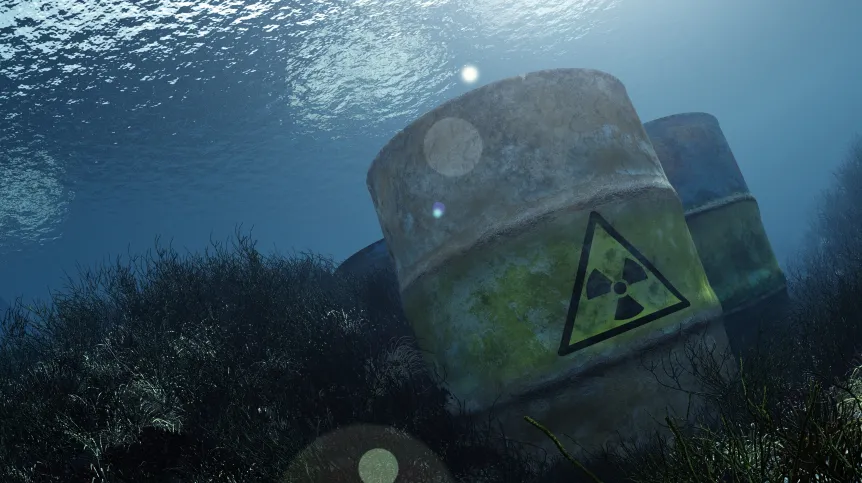
Scientists from the Jagiellonian University have developed an invention that will allow sappers and scientists to safely identify submerged materials considered potentially dangerous.
The team led by Dr. Michał Silarski and Professor Paweł Moskal from the Institute of Physics of the Jagiellonian University has developed a concept of a detector that will determine the chemical composition of substances lying at the bottom using a small neutron gun and a proprietary computer system.
The entire device will be the size of a suitcase. 'It can be mounted on an underwater, remotely controlled probe, capable of operating at greater depths, says the university press release. It only takes about 10 seconds to collect data and, on their basis, determine the chemical composition of the tested substance. The device will work properly at a distance of several dozen centimetres from the target, it will not have to touch the tested object.
According to Dr. Silarski, the method 'will basically enable identification of every substance from the catalogue of dangerous substances that lie at the bottom of water bodies.’ Scientists can use it to detect substances including carbon, hydrogen, oxygen, nitrogen, sulphur, chlorine, as well as war gases containing arsenic. 'In the laboratory, we examined seabed samples taken from the vicinity of the Stuttgart tanker sunk near the port of Gdynia. We identified the presence of heavy fuel oil - mazut,’ Silarski adds.
The 2020 Supreme Audit Office report shows that there are over 400 shipwrecks in Polish maritime areas, of which over 100 lie at the bottom of the Bay of Gdańsk. In addition to the wrecks, there are also sunken conventional munitions and tanks with highly toxic chemical compounds in the Baltic Sea - poisonous warfare agents that pose a real threat to the natural environment and human health. 'According to various available data and estimates, there are still over 32,000 tons of chemical ammunition at the bottom of the Baltic Sea in the Bornholm Deep, and about 60 tons in the Gdańsk Deep area,’ the scientists say.
The key advantage of the new method is the ability to identify potentially hazardous materials remotely, without the participation of a diver. This eliminates the risk resulting from contact with conventional and chemical ammunition.
The neutron gun is a relatively small generator that collides deuterium ions with the hydrogen isotope - tritium. 'Neutrons emitted from the generator penetrate the immersed object and excite atoms of the tested substance, as a result of which they emit gamma quanta,’ the university reports.
These are registered by the detector developed at the Jagiellonian University. Since each element has a separate, specific readout of gamma quanta, analysis of their entire spectrum and quantity ratios allows to determine exactly what substance is hidden in the sunken container.
To get rid of interference from the water between the detector and the tested substance, the device is equipped with special pipes filled with air, through which the neutron beam is directed. The quality of data reading depends on how close the detector can be placed to the tested substance, but direct contact is not necessary.
The invention is based on an original solution of the system of neutron guides and the anti-Compton shield. 'Thanks to them, neutrons reach the tested object without interference caused by water between the device and the tested substance. Moreover, we can clean the gamma quanta readout spectrum from some of the interference caused by the excitation of water. This makes the test significantly more accurate and facilitates the identification of the substance,’ says Dr. Silarski.
He adds that this is a breakthrough in this field, because so far, due to interference of hydrogen atoms contained in water with the readout, the method of identifying underwater objects using neutron beams has not become widespread. 'Our solution can change this,’ he says.
The team is now looking for a technological partner to jointly introduce the new solution to the market.
PAP - Science in Poland
amk/ agt/ kap/
tr. RL













